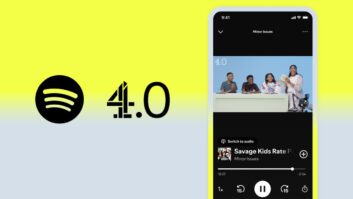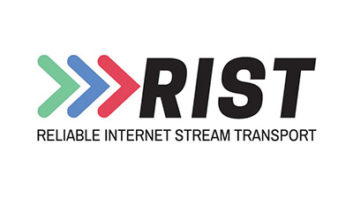
Simon Orme, BT Wholesale’s general manager of content services, explores the ‘Channel-in-a-Box’ and ‘Channel-in-a-Cloud’ concepts and their role in satisfying TV stations, content providers, communications providers and end users’ requirements in an efficient, sustainable and innovative way.
BT Wholesale believes there are two key technology trends which will transform the TV channel distribution market over the next 10 years. The first, as highlighted by the title to this article, is the transition of TV playout from proprietary broadcast application devices to standardised IT hardware and software. This transition, which is well underway, brings the benefits of step-change cost reduction, and consequent lowering of barriers to entry, along with accelerated innovation enabled by convergence with the wider IT & software industry. The end game of this transition might be labelled ‘Channel-in-a Box’.
The implications of these developments are a lowering of barriers to entry and a rapid increase in innovation as smaller, more focused channel creators are able to reach audience segments that were previously uneconomic. In particular BT Wholesale expects to see an explosion in the number of branded channels launching in the infotainment genre from the health, travel, technology and government sectors.
The second key technology trend BT Wholesale recognises is cloud computing, a heady combination of virtualisation and distributed IT architecture. Cloud computing allows us to serve applications, data or content from the most efficient place in the network. In simple terms we believe this could mean that all content in a channel is not played out from a single central location, but instead is played out from several distributed locations controlled from the centre. Clearly a cloud computing approach to channel distribution is dependent on an IT-based approach and Channel-in-a-Box is therefore a precursor.
A distributed IT-based approach to distribution is already commonly used for delivery of Video-on-Demand (VoD) services. BT Wholesale calls this approach a Content Delivery Network (CDN): a distributed network of content servers which store content popular to that specific location on a dynamic basis, all controlled from a centrally managed caching and traffic routing application. VoD is essentially an one- to-one delivery mechanism characterised by a user ‘demanding’ a piece of content at a particular moment in time to suit him/her. The asymmetry of demand (that is, relatively few content assets account for the vast amount of user traffic) and the spontaneous peaks in concurrency typical of VoD services have stimulated this CDN approach based on dynamic storage located close to the point of consumption.
Clearly this approach is inappropriate for traditional TV channel delivery, and more recently operators of IP networks have started to deploy IP Multicast technology to deliver TV channels more efficiently offering an end user experience more compatible with expectations of TV viewing. The particular challenges with TV over IP Multicast have been with packet drop and delayed channel change, both of which have resulted in unacceptable user experience in consumer tests.
BT Wholesale believes there are several resolutions to this but an increasingly popular approach is to create a hybrid solution with a CDN, and use the on-demand capabilities of the CDN to unicast dropped packets and the few milliseconds of content required after a channel change whilst awaiting the next i-frame in the multicast stream. The technical details of this are of less interest here than the potential opportunities resulting from creating a hybrid multicast/unicast delivery network.
An early benefit will be the ability to serve advertisements in a much more granular fashion than possible with traditional broadcast technologies. In essence, a hybrid multicast/unicast architecture could serve advertisements on a highly targeted basis by time of day, location of viewer, and any other pertinent characteristics from a target audience profile. Such a profile could be applied to highly granular audience segments constrained only by innovation in media analytics and maturing of industry approaches to behavioural advertising and associated privacy issues.
However this hybrid multicast/unicast delivery approach opens up further transformational opportunities. For most TV channels, programmes are pre-recorded. The Channel-in-a-Box approach serves this need primarily through a content storage capability along with a scheduling tool, or playlist, which ensures programs are played out in the right order and at the right time. For many channels, an individual programme may be played out several times over a period of several days.
The underlying software and hardware capabilities enabling this functionality are not very different in principle to that existing in the CDN architecture described above. Assets are stored locally for a predefined period of time and are served to viewers against a defined set of policies. The concept of a playlist is already in common use within CDN architecture to schedule adverts alongside VoD content.
This approach extends the Channel-in-a-Box concept to the Channel-in-the-Cloud model which BT Wholesale fully expects to provide the means to breathe new economic life into the broadcast industry.
Broadcasters are steadily finding themselves between a rock and a hard place. Advertisers either want very large scale, which is becoming scarcer as audiences fragment, or they want granular targeting models with high levels of accountability, which traditional broadcasting cannot deliver. The economics of current broadcast technology militates against creating a model of distributing to smaller and smaller segments. The marketing and network costs rapidly become uneconomic using traditional means, whilst the one-size-fits-all model fails to deliver accountability.
While the internet, VoD services and increasing fragmentation of TV audiences threaten to undermine the economic model of traditional TV broadcasting, BT Wholesale believes the Channel-in-the-Cloud approach creates a convergence of on-demand and linear TV viewing which plays to the strengths of broadcasters’ commissioning, editorial and scheduling skills, whilst leveraging IP network technology to create a transformational user experience and deliver accountability.
We believe the combination of hybrid multicast/unicast delivery technology with sophisticated asset management and playlist control will enable channel controllers and marketers to create a radically new usage model for TV viewers. Not only will they be able to serve advertisements on a targeted micro-segmentation basis, but within a single channel brand, channel operators will be able to craft highly tailored viewing experiences for their audiences based on generic or opt-in profile data.
Channel marketers will be able to target sufficiently broad segments to support investment in high impact channel brand creation, whilst channel editors and schedulers will be able to create tailored viewing experiences targeted at sub-groups within the wider channel segmentation. This might, for example, be as simple as rescheduling channels for viewers who prefer to watch TV between ten and midnight as opposed to eight and ten. The result will be a much more relevant and compelling viewing experience, with much greater retention, driving significantly more value for the TV channel.
BT Wholesale believes that implicit in the Channel-in-the-Cloud business model is a deep collaboration between the TV and the broadband industries whose networks have the potential to deliver a new and vital economic model for TV channel distribution. It is an often-cited truth that the one thing broadcasters don’t do is broadcast – most TV companies gave up their transmission networks years ago and now buy in transmission services from third party suppliers. The broadband industry has the potential to deliver those same services more economically and at the same time to create a transformational usage model which could be the salvation of the TV broadcasting industry.
BT Group recently brought its media and broadcast expertise together in BT Wholesale. Later this year, BT Wholesale plans to introduce its new Content Distribution Network (CDN) model for the UK.







